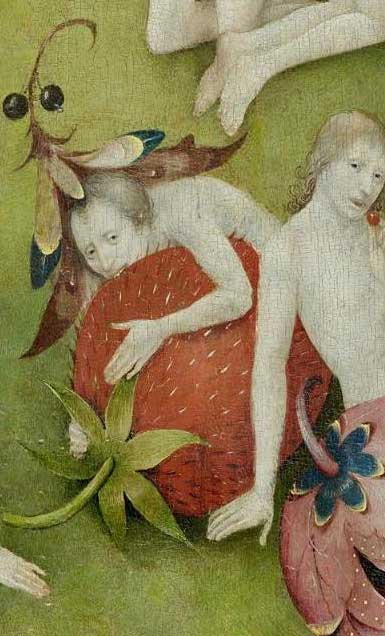- Ecocritical studies of cinema, media, & visual culture
- Environmental communication; Ecomedia studies; Media ecologies
- Eco-arts; Environmental & land art; Environment & performance
- Place, heritage, & environment in cultural policy studies

Over the past two decades, “green” or “ecocritical” approaches have infiltrated — and in some ways begun to reshape — traditional modes of cultural theory and critique. Ecocritical literary studies, green cultural studies, ecomedia studies, environmental communication, ecocomposition and ecopoetics, ecomusicology, and other subfields are contributing to a burgeoning movement of environmental arts and humanities. Much of my teaching, advising, and writing has been somewhere within this spectrum.
My book Ecologies of the Moving Image: Cinema, Affect, Nature presents what is arguably the most comprehensive of analysis of moving images — including films, videos, and their predecessors — from a rigorously theorized eco-philosophical perspective. You can read excerpts from about a dozen reviews of it on the publisher’s web site, and overviews and supplements on my blog and on e2mc, which was used as a course blog for a class I taught based on the book. And you can read the Preface here.
A current book in progress is called The New Lives of Images: Toward an Ontology of the Image-World, which builds on, among other things, a recent article on “Image Ecologies, Spiritual Polytropy, and the Anthropocene,” where I laid out a typology of six kinds of “image regimes” which are coalescing within the emergent regime of the digitally mediated “image-world.” Immanence covers some of my more recent work in media studies (as does my co-editorship of the open-access, peer-reviewed University of California Press journal Media+Environment).
Here’s a sample of other work in ecomedia studies, film studies, green visual studies, and ecomusicology:
- The Art of Morphogenesis: Cinema In and Beyond the Capitalocene, in Denson and Leyda, eds., Post-Cinema: Theorizing 21st-Century Film (ReFrame, 2016).
- Late Soviet Discourses of Nature and the Natural: Musical Avtentyka, Native Faith, and “Cultural Ecology” after Chornobyl, in Allen and Dawe, eds., New Directions in Ecomusicology: Music, Culture, Nature (Routledge, 2016).
- The Age of the World Motion Picture: Cosmic Visions in the Post-Earthrise Era, in S. Brunn, ed., The Changing World Religion Map (2015).
- The Anthrobiogeomorphic Machine: Stalking the Zone of Cinema. Film-Philosophy 15.1 (2011), 118-139.
- Cinema of the Not-Yet: The Utopian Promise of Film as Heterotopia. Journal for the Study of Religion, Nature, and Culture 5.2 (2011), 186-209.
- Opening Pandora’s Film (with B. R. Taylor). Journal for the Study of Religion, Nature, and Culture 4.4 (2010), 384-393.
- Nature’s Nature: Improvisation, Democracy, and Ken Burns’ National Parks. Environmental Communication (2010) 4.4. 462-468.
- From Frames to Resonance Machines: The Neuropolitics of Environmental Communication. Environmental Communication 4.1 (2010), 109-121.
- Green Film Criticism and Its Futures. Interdisciplinary Studies in Literature and Environment (ISLE) 15. 2 (2008), pp. 1-28. Also published in Foreign Literature Studies 29. 1 (2007), ‘Ecocriticism’ issue (ed. by Scott Slovic), pp. 46-65.
- Stirring the Geopolitical Unconscious: Toward a Jamesonian Ecocriticism. New Formations 64 (Spring 2008), pp. 98-109.†
- Spaces at an Exhibition: Immersive Passages through Central/Eastern European Identities, Занурення/Zanurzenie/Immersion, exhibition catalogue, ed. Jerzy Onuch (Kyiv, Ukraine: Centre for Contemporary Art), pp. 11-19. Ukrainian version reprinted in Krytyka VII (12), 2004, on-line version.
- Sustainable Vision, or the Art of Seeing Gracefully, Natural Grace exhibition catalogue, Amy E. Tarrant Gallery, Flynn Center for the Performing Arts, Burlington VT/International Sustainable Communities Conference (2004).
- De/composing (in) the Postmodern Soundscape: Ruminations on Music-making between Global Capital and Ecotopia, Musicworks 64 (1996), 26-31.
- See also EcoCulture (environmental culture, communication, visuality, etc.), MediaSpace (media studies, film studies, etc.), ImageNation (art & visuality), and Soundscape (ecology of music, soundscape studies, etc.) @ Immanence.
